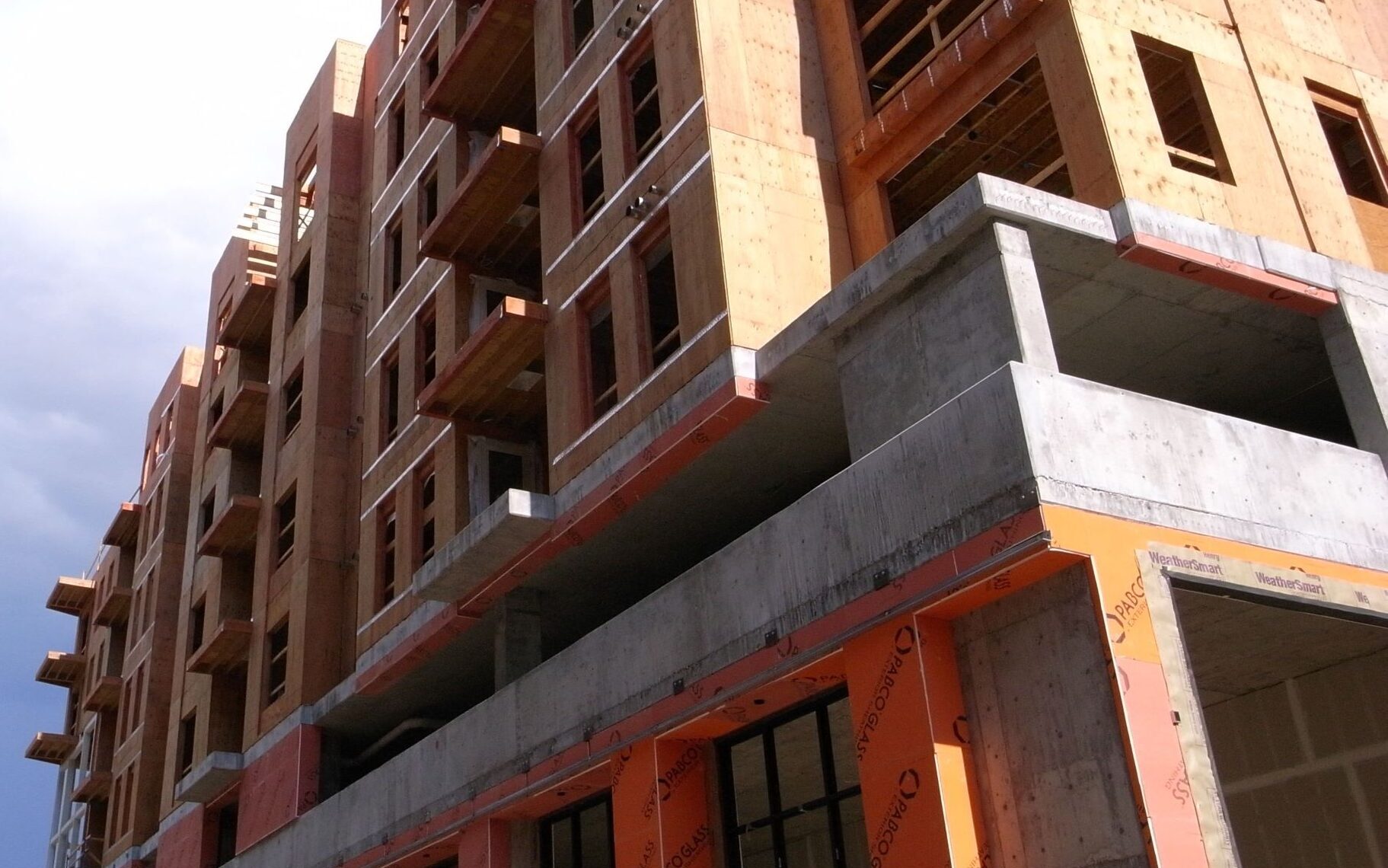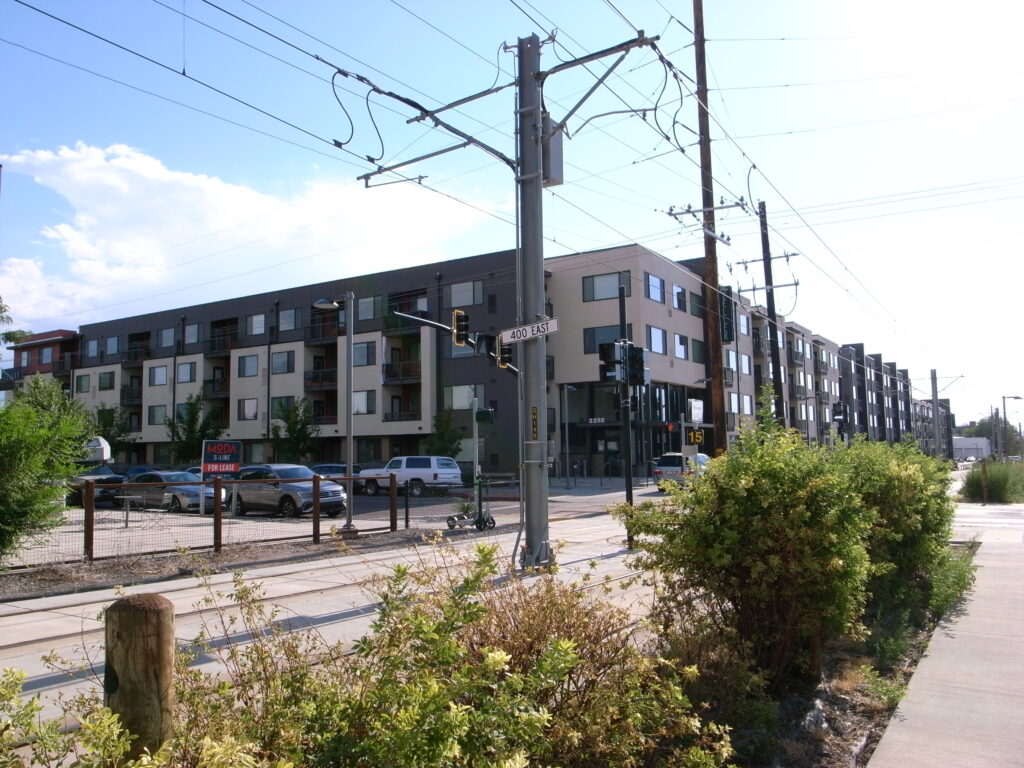
Transit-Oriented Development (TOD) is all the rage, seemingly the perfect solution to our current housing and climate crises. Dense, often mixed use, development close to public transit brings urban living to suburban neighborhoods and encourages transit-use over car-use, what more could you ask for? In fact, even the Utah State Legislature is so taken with TOD that they recently passed a bill making it so that cities need to develop a station area plan to spur TOD around every current and future rail and bus-rapid-transit station in the whole state.

In 2013 the Utah Transit Authority built the S-Line streetcar connecting Central Pointe station in South Salt Lake to the Sugarhouse neighborhood of Salt Lake City. This was hailed as the return of the streetcar to the streets of Salt Lake since the original streetcar network was disassembled in the 1940s, but it also spurred a flood of development alongside the streetcar corridor. Since the S-Line was built, 8 new apartment and townhome projects have brought hundreds of new housing units to Salt Lake, with even more coming down the development pipeline. But who gets to live in this newly created “urbanism”?

When looking into the S-Line TOD the first thing you might notice is that it is overwhelmingly made up of Studio, 1-bedroom, and 2-bedroom units, with only townhome style developments offering 3-bedroom options. Already this skews the potential residents of this new TOD towards single persons either living alone or with roommates, couples without children, or small families with no more than 2 children. Large families need not apply, the city is not being made for you. What is most disturbing, however, is the rents charged for these units. At the studio level, the minimum rent for an available unit at the time of writing this article was $1,260 with a maximum offer of $1,832. The 1-bedroom units ranged from $1,391 to $2,245 and the 2-bedroom units from $1,740 to $4,325.
To put this all into perspective, in order to not be burdened by rents (spend more than 30% of your income on housing) the minimum annual income required to live in the average studio unit is $62,840, $73,200 for the average 1-bedroom, and $103,760 for the average 2-bedroom unit. Even by the County’s own standards these rents are absurd, each measuring over 65% above the so-called Fair Market Rent, with the average of available 2-bedroom units being nearly double the Fair Market Rent.
This unaffordability is what we can expect of Transit-Oriented Development in the capitalist city, and with Utah House Bill 462 we’re going to see a lot more of it here in the Salt Lake valley. Public transit built to spur development, development dictated and driven by capital, and the working-class pushed further and further away from urban centers and the transit they would benefit most from. Ironically, H. B. 462 frames itself as promoting housing affordability, a claim echoed at all levels of government and public institutions. The claim that an increase in market-rate housing will somehow manifest more mid- and even low-income housing is justified with the same played-out logic of trickle-down economics, which would have us believe that policies which benefit and strength the capitalist- and upper-classes will trickle-down and benefit the working- and lower-classes as well (its clear to all how well this has worked out in the workplace).

TOD could be a worthwhile goal. The path towards ecological living requires getting rid of sprawling suburbs and the car-centric lifestyles they require, and literally speaking transit-oriented development, or building our cities around transit is the way to live ecologically at scale. But when TOD and public transit is built by and for capital, the potential good of TOD quickly fades away. Instead, existing transit-oriented development orients itself to the same classes as gentrification; the upper-classes, the YUPPIES (Young Upwardly-mobile Professionals), and anyone more interested in consuming the urban experience than authentically connecting and contributing to the city, its streets and the people who live in it. TOD has become just another tool for capital to wield in its endless search for more and more profit, for wealthier and wealthier markets, and the total subsumption of space to its will. The consequence of capitalist TOD is that while the upper classes rediscover an ever-more-completely commodified urbanism, the lower classes are priced further and further into the suburbs and away from the neighborhoods they once helped make. The very same neighborhoods now being sterilized to make way for an urban experience marketed to the children of parents who a generation ago fled to the suburbs in search of the “American Dream.”
As with all other parts of life, it’s difficult to imagine what city-building will look like without capital. Today everything involved in producing space, from the land, materials, and labor, to the planning and design, is entirely commodified and forced to serve capital and the myriad markets it operates within. Finding ways to create and relate to space that are free from the capitalist logic of exploitation, domination, and competition will be difficult, but the price of not fighting against capital is its continued exploitation, eviction, displacement, immiseration, and domination of all of our lives. The fight for a just and truly human city is the fight against capitalism and the spaces and relationships it would force us into.
All space is already occupied by the enemy, which has even reshaped its basic laws, its geometry, to its own purposes. Authentic urbanism will appear when the absence of this occupation is created in certain zones. What we call construction starts there.
Materializing freedom means beginning by appropriating a few patches of the surface of a domesticated planet.
Basic Program of the Bureau of Unitary Urbanism
